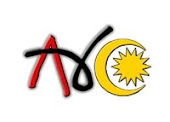 The keris is a weapon used by the Melayu since the era of the Melayu Sultanates more than 800 years ago. It was used by the pendekars, armies and palace nobility. It was also revered as a ceremonial tool and a symbol of royalty.
The keris is a weapon used by the Melayu since the era of the Melayu Sultanates more than 800 years ago. It was used by the pendekars, armies and palace nobility. It was also revered as a ceremonial tool and a symbol of royalty.
Research has shown that the keris originated from the Majapahit empire which ruled in the 13th century. After the decline of the Majapahit, many of its blacksmiths migrated to other areas such as Jawa, the Sumatran islands, the Sulawesi islands and finally to the Melayu Peninsula. The keris developed as a weapon in the Melayu Peninsula up until the point it was occupied by the British. British law banned the wearing of the keris on the body or used as a weapon but only allowed its ceremonial role.
There are many different types of keris, however, the Keris melayu as used by the Melayu normally displays the features of the original Majapahit keris, which has the Jawa Demam hilt and a boat-shaped piece on the sheath.
Parts of the Keris Melayu
Names of different keris parts:
1. Hulu (hilt)
2. Sarung (sheath)
3. Pendokok/ bedokoh
4. Sampir
5. Buntut (end)
6. Perut (stomach)
7. Pamor (pattern)
8. Lok (wave)
9. Bilah/ awak/ mata keris (blade)
10. Aring/ ganja (crosspiece)
11. Puting/ unting/ oting (tang)
12. Pucuk/ hujung mata (blade tip)
13. Tuntung
14. Belalai gajah (elephant trunk)/ kembang kacang
15. Lambai gajah/ bibir gajah (elephant lips)
16. Bunga kacang
17. Gandik
18. Dagu keris (chin)
19. Kepala cicak (gecko head)
20. Leher cicak (gecko neck)
21. Gading gajah (elephant tusk)
22. Ekor cicak (gecko tail)
23. Janggut (beard)
24. Kepit/ sepit rotan (rattan pincers)
25. Lurah/ kambing kacang
26. Tulang/ tulangan (spine) 
The 'gecko head' and 'gecko tail' get their names from the gecko resemblance when viewed from the tang end. The ganja comprises the gecko head, neck and tail. The ganja and the blade are two different pieces which are assembled later. However, there is a keris type where both of these are of a single piece, called the Keris Ganja Seiras or the Single View Keris.
The Spiritual Value of the Keris
The keris is not only a weapon, but it also carries certain symbolic meanings. The tang of the keris represents masculinity, while the crosspiece with its hole in the middle represents femininity. The combination of both elements gives birth to a balance in life and power.
The blade of the keris represents the shape of a dragon, which is closely connected to water and rivers. Water is the source of life, thus the dragon is a mystical lifeform that represents power. A keris with no waves represents a resting or meditating dragon, while a wavy keris represents a moving dragon. The belalai gajah and lambai gajah represents and elephant, which is an allegory for power.
The keris was originally made from a composition of iron mined from the earth and the meteoric iron ore. This produces a pamor which is believed contained magical powers as a result of the blending of earthly and heavenly elements.
The keris is also believed to have an affinity or rapport with its owner. The owner will measure the length of the keris from its crosspiece down to its tuntung using his thumbs while reciting holy verses or a mantra. He will cease his recitation when one of his thumb arrives at the tuntung and depending on which verse marked the arrival will determine the affinity between keris and owner. An owner who truly believes in this affinity will not buy or use a keris which does not have this quality, irrespective of the value, beauty or scarcity of the keris.
The Melayu societies of the past would practise keeping kerises on the crossbeam of their homes as protection against enemies, evil spirits and diseases. It is believed that a keris would rattle and make sounds in its sheath when danger approached. Some are even believed to unsheath and fly to the enemy on their own, or when the owner pointed towards the enemy's location, the keris would fly out to the enemy and kill him.
Is it any wonder then, why the keris is so highly revered by some owners who faithfully bathe their kerises every Thursday night (deemed a special night) or once a year in the month of Muharram, to ensure that the power of the keris is not left untended and cause it to run amok or leave the keris totally. However, with the advent of Islam to the Melayu Peninsula, many of these beliefs have been discarded and what remains is a cleaning or weapon care ritual.

Famous mystical Kerises
Among the most popular kerises is the Keris Tamingsari owned by Hang Tuah which was believed to gran invincibility to its wielder. On the other hand, Hang Jebat's keris has a void in its blade which allows its owner to the future, and it was by this way that Hang Jebat discovered his impending death at the hand of his own blood brother, Hang Tuah.
The Keris Kai Condong, which is inhabited by an evil spirit, flies and kills anyone its finds when night falls. This keris was eventually defeated by three other mystical kerises which combined and baited it into a magically prepared pounder, which instantly destroyed it. However, the destroyed keris finally flew away to rejoin a comet of the same meteoric ore from which it was made.
This article was translated by Mohd Nadzrin Wahab from the original article "Asal Usul Keris Melayu" at http://www.mishafbisnes.com.my/krafmelayu/keris.htm for publication in the World Silat Championship 2007 souvenir book. For a reference to the article , please email webmaster [at] silatmelayu.com







